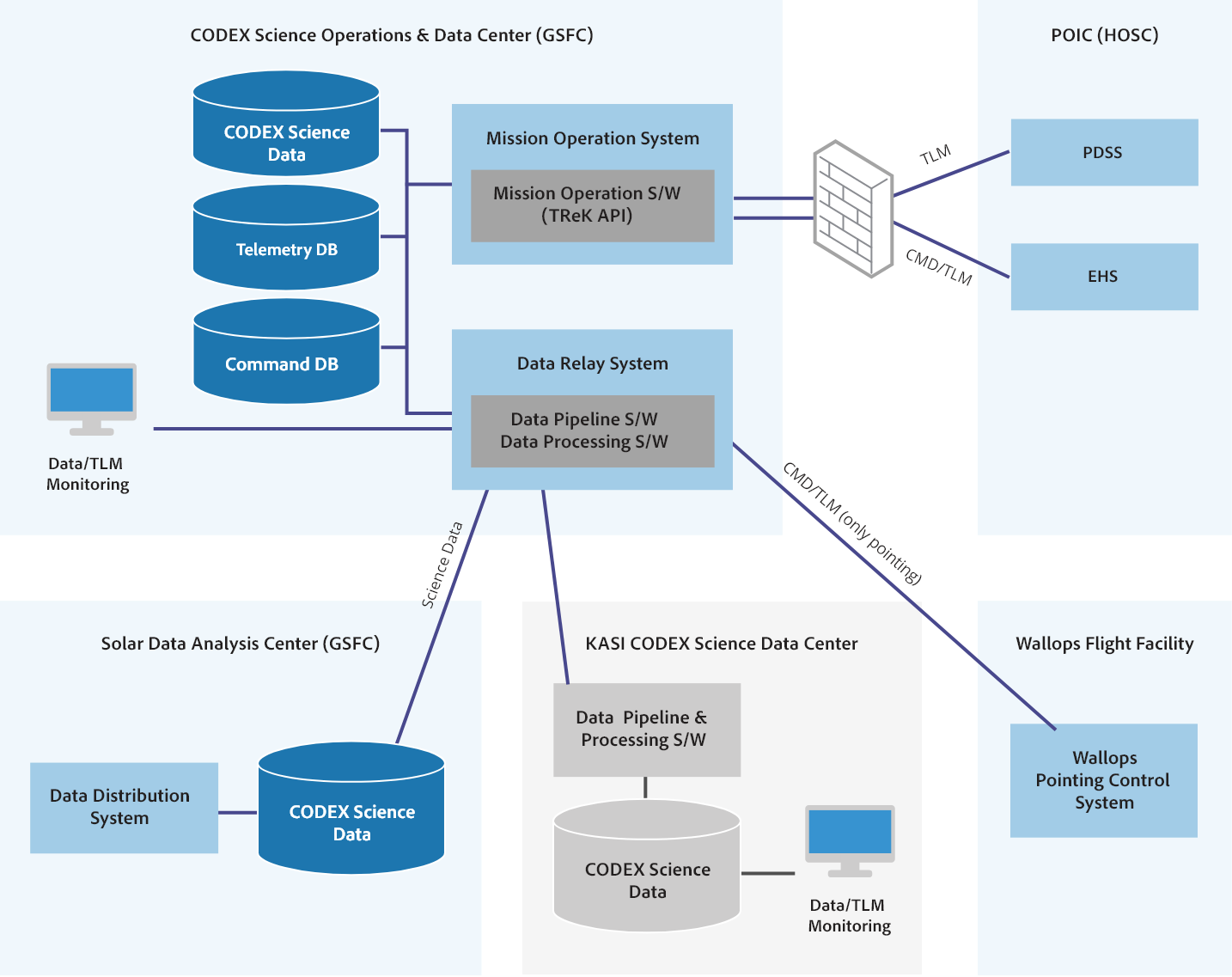Focal Plan Assembly
KASI develops space-grade polarization camera with Sony polarization image sensor (IMX-253MZR).
Sony polarization image sensor has a multi-directional polarizer which is formed on top of the photodiode of the image sensor chip.
The sensor can capture a four directional polarization image in one shot by the four directional polarizer.
The number of pixels are 4096 x 3000, and the pixel size is 3.45 μm.
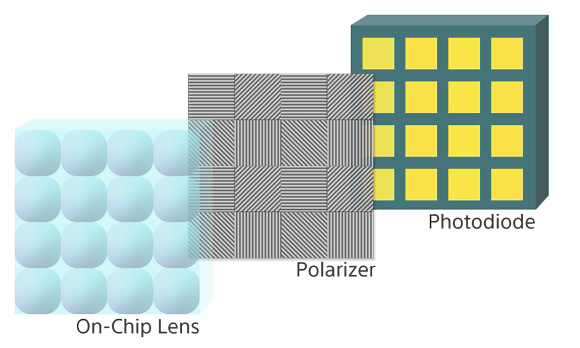

Table. CODEX Polarization Camera Specifications
(data transmission and communicating)
Because the Sony polarization sensor is not released for military or space purposes, we have vacuum and radiation tests in the environmental condition at 400 km altitude of ISS. The camera characteristics including quantum efficiency before and after the experiment were compared. The RMSEs for each polarization angle are 0.20, 0.34, 0.30, 0.67 respectively. The DoLP (Degree of Linear Polarization) were also compared. They are 0.98 and 0.99 before and after the experiments.

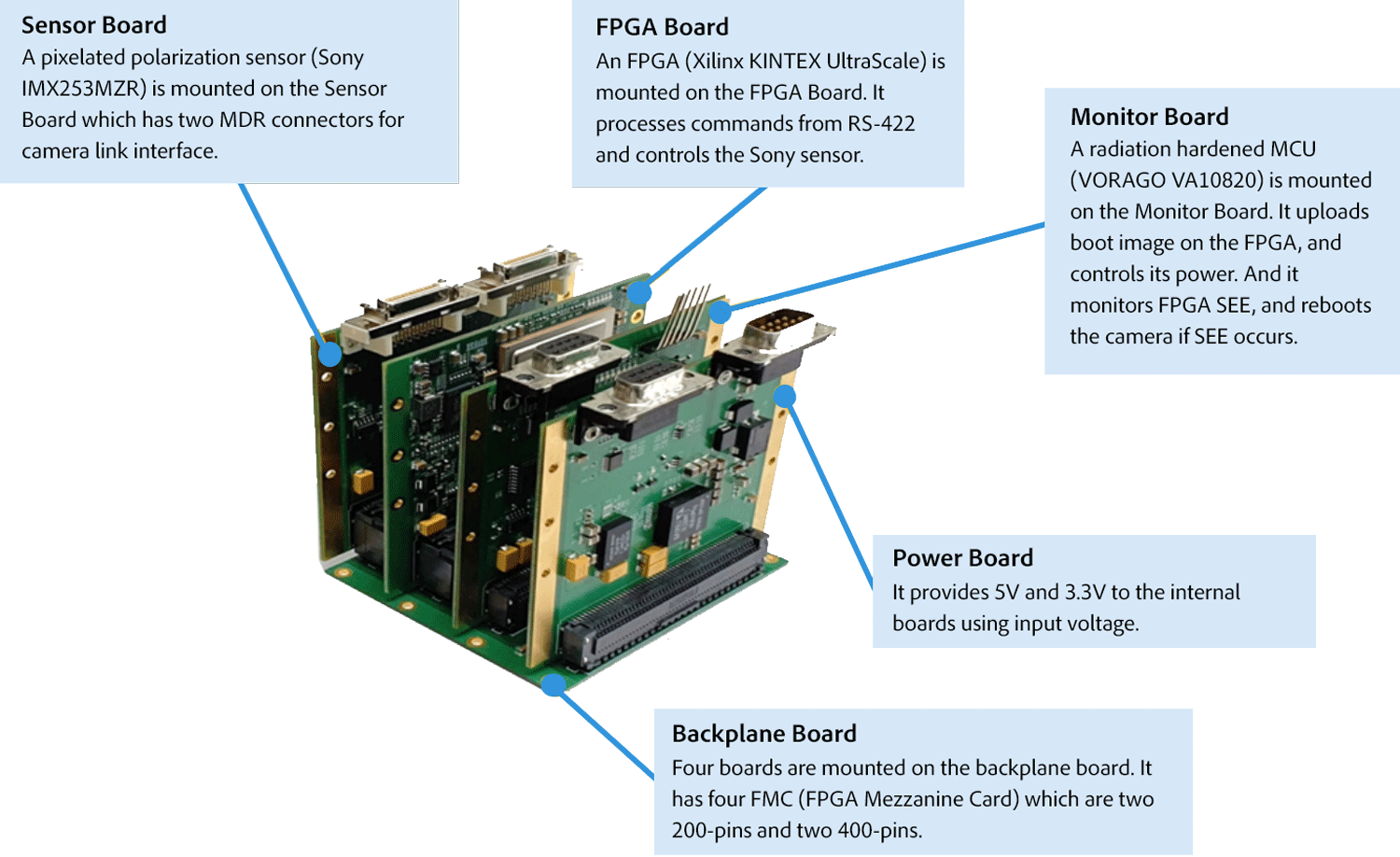
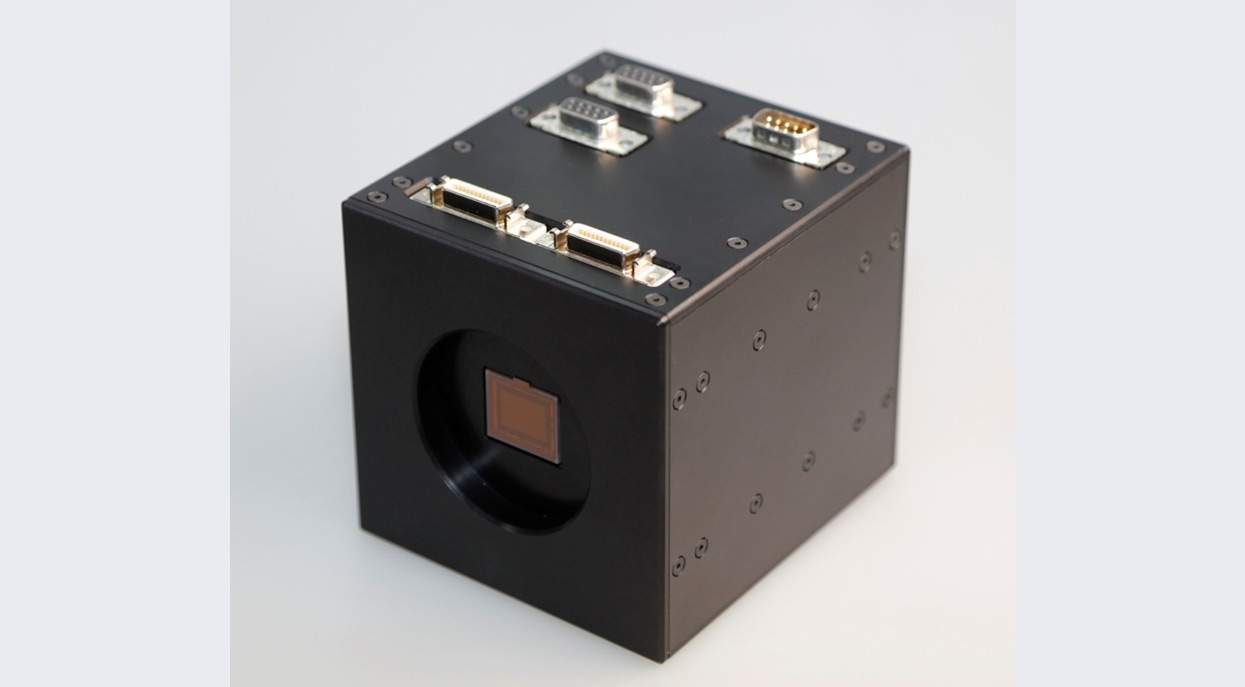
https://www.sony-semicon.co.jp/e/products/IS/industry/product/polarization.html
Filter Wheel Assembly
We design the CODEX with two filter wheels for the band filters and the neutral density filters in the beam path.
Each filter wheel has five filter positions. Each filter wheel will be rotated by a geared stepper motor.
Two pairs of the photo-transistor and LED are used to sensing the filter position.
We also install a hole sensor for the backup of the home positioning.


The MCE controls the aperture door, the launch lock, as well as the FWA. The ARM Cortex M0 VA10820 of the Vorago technology is used as a main controller of the MCE. The MCE communicates with the CCE via RS-422 ports, as shown in Figure 2. One of the special design of the FWA and the MCE is that the overall system has a redundancy. The stepper motor is dual wounded, and the two identical encoder modules are installed. We also install two MCE for redundancy, as shown in the diagram of Figure 2. In 2021, we will manufacture qualified models of the FWA and MCE to confirm the performance of the system. Then we will finalize the design of the flight model.
Flight S/W
CODEX flight software is developed by extending BITSE flight software.
The flight software controls a camera and actuators of filter wheels and an aperture door.
It communicates with a power switching unit, a pointing system, and the International Space Station.
The CODEX flight software uses 8 mission applications and 10 NASA flight-proven reuse applications to support low data rates and long mission duration on the International Space Station.
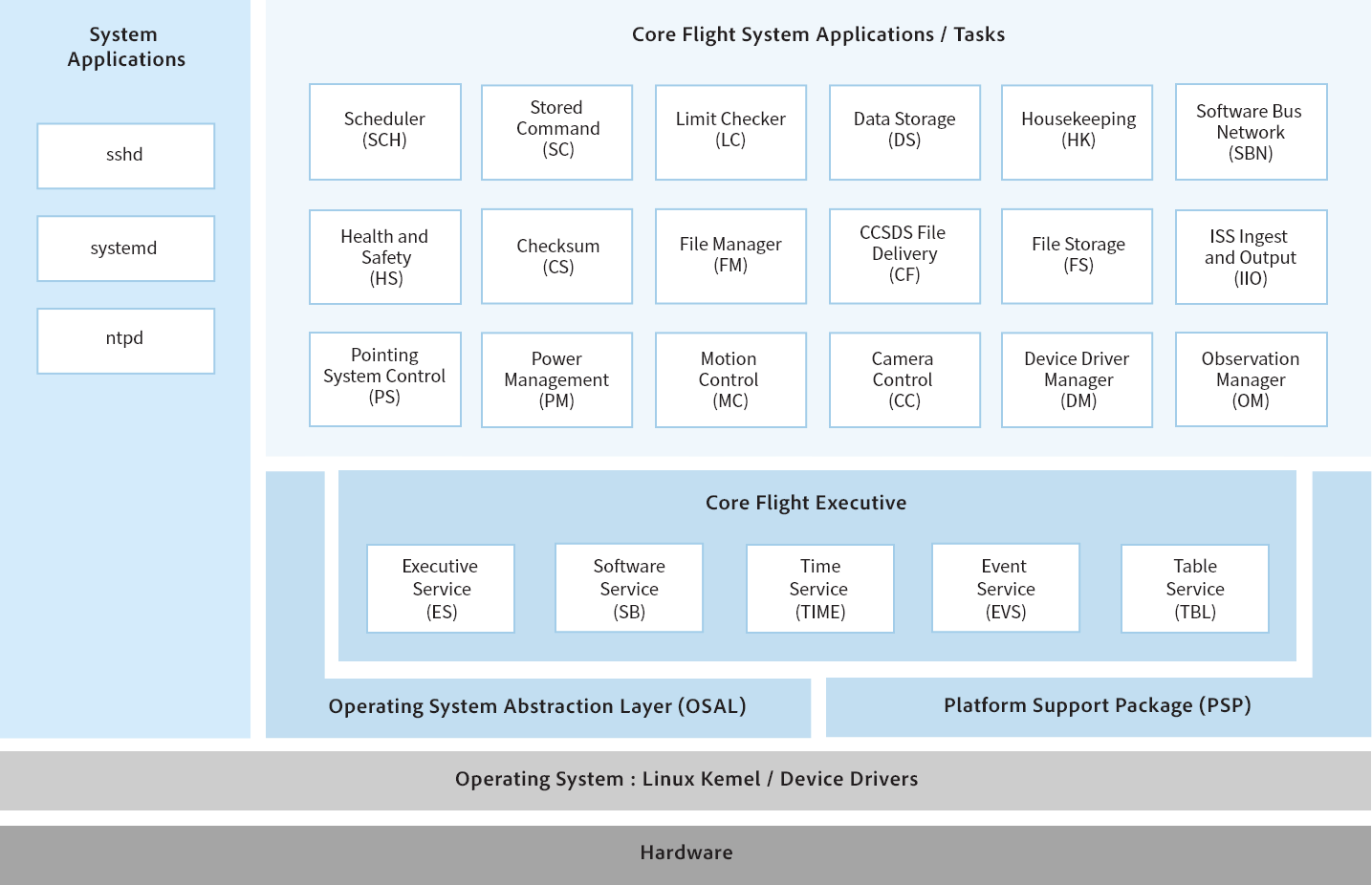
Ground System & S/W
KASI is developing Ground System & Software for solar coronagraph for the International Space Station (ISS).
The Ground System includes the design and construction of the CODEX Science Operations & Data Center (SODC) and the KASI CODEX Science Data Center.
KASI is also developing all software related to CODEX's ground systems, including mission operating software, data pipelines, and data processing software.
SODC will be deployed in NASA/GSFC, and it will operate CODEX, process and deliver command/telemetry, pipeline and distribute scientific data.
KASI CODEX data center is for the processing and data distribution of scientific data.
Mission operation software will be developed based on TReK, software for ISS programs provided by MSFC/HOSC, and dashboard based on COSMOS or web for telemetry monitoring and analysis during operation will be developed.
